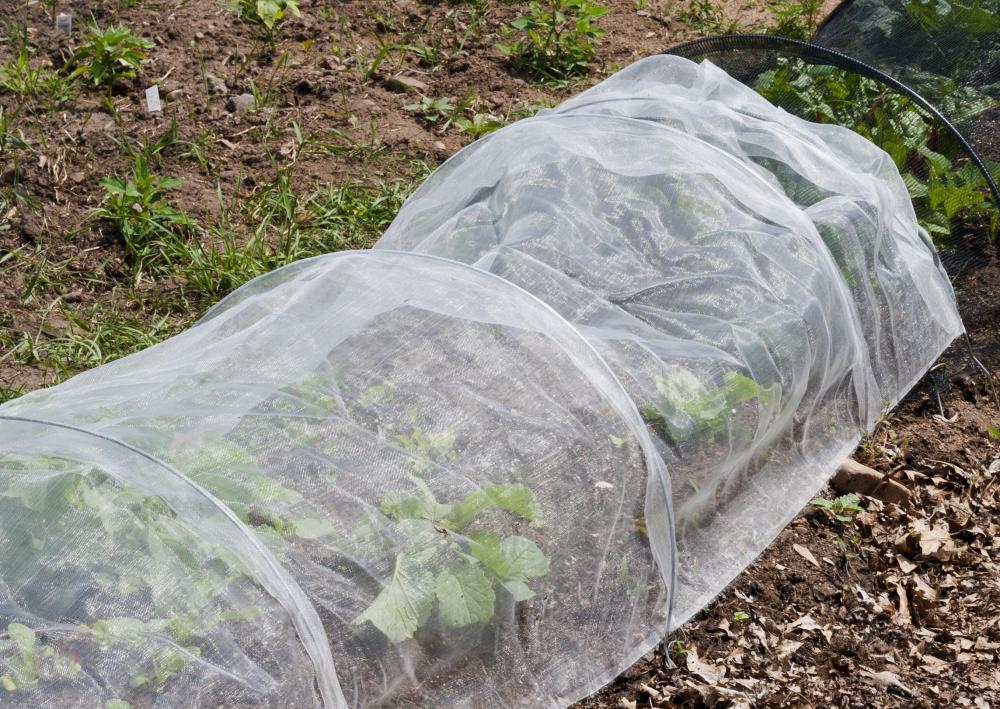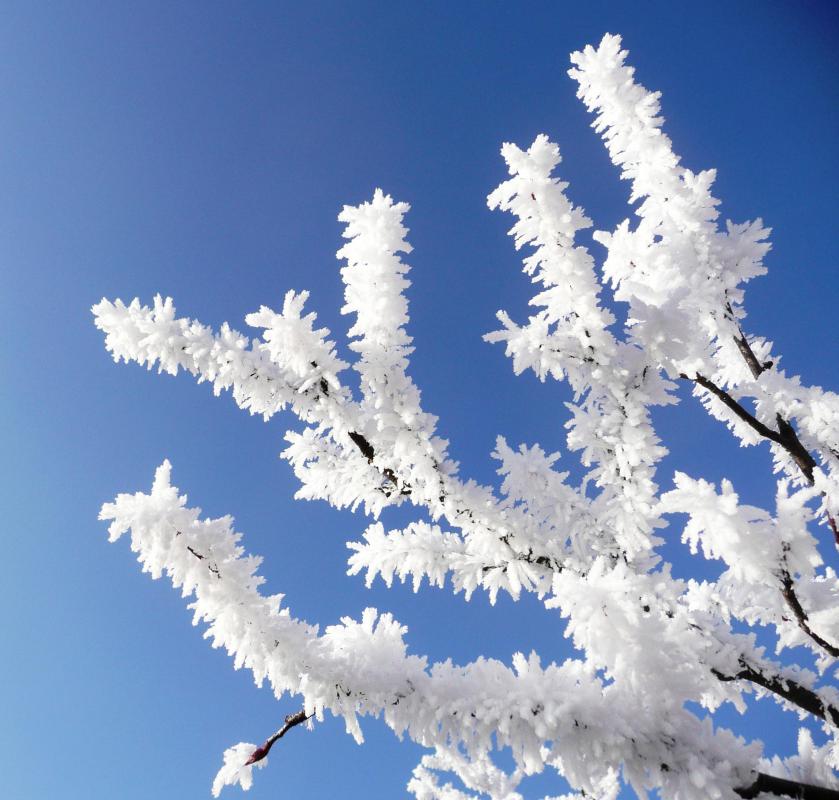At WiseGEEK, we're committed to delivering accurate, trustworthy information. Our expert-authored content is rigorously fact-checked and sourced from credible authorities. Discover how we uphold the highest standards in providing you with reliable knowledge.
Why Do I Need to Protect Plants from Frost?
Some plants are well adapted to surviving periods of cold weather when temperatures drop below freezing, but frost-sensitive plants can be severely damaged or even killed by a hard frost. In areas that rarely suffer from cold weather, gardeners often plant tropical or semi-tropical plants that can be damaged by an unseasonably cold winter or an early or late season frost. When cold weather is predicted, it is important to protect plants from frost to prevent damage or death.
Plants are most likely to be damaged by frost when they are producing active new growth. This can occur when a hard frost hits in late spring after the plants begin growing. The new, tender growth is easily damaged or even killed, as it has not had time to fully establish. A hard frost early in fall can also cause damage, as the plants have not had time to go into a dormant state in preparation for the cold weather. Frost damage also can happen in winter when temperatures drop below the level to which a plant is adapted.

Watering deeply before a hard frost can help protect plants from frost damage, and keeping plants well watered in general also helps to prevent regular frost damage from occurring. The plant leaves store moisture, but when they are covered with frost, moisture is drawn out of the leaves. A well-watered plant experiences less general stress than a drought stressed plant, making it better able to adjust to the cold weather.

Frost-tender plants can be planted in protected areas where winter temperatures are felt less severely. A south-facing wall and a spot that is protected from winter winds can help prevent frost damage. Likewise, a spot that gets full sun will warm up more quickly during cold weather to help prevent frost damage to plants. An alternative method to protect plants from frost damage is to plant them in containers and overwinter them indoors.

Mulch also can help to regulate soil temperature, but it has to be applied before the cold weather sets in to be effective. Once the ground is already frozen, mulch prevents the soil from warming back up. Mulch should be spread 2 to 4 inches (about 5 to 10 cm) deep in fall — before the first frost — to protect plants from frost damage.
Home and garden centers also sell cloth wrapping material that can be used to protect trees and shrubs. Wrapping a frost-sensitive tree trunk with insulating cloth material can help prevent damage. Another method used to protect plants from frost is to drape the entire canopy with insulating material.
AS FEATURED ON:
AS FEATURED ON:














Discussion Comments
@Ilvuiaporos - Well, plant frost protection has come a long way from the days when they had to light fires in order to heat up the orchards and vineyards or gardens.
A lot of modern farmers would be skilled at creating a micro-climate for something like vineyards, or they could use electric heaters to keep frost away. I've heard of greenhouses that are heated with solar heaters, or, in theory, if you build them deep enough in the ground, the frost won't touch them there either.
@Fa5t3r - There is a type of dessert wine known as ice wine, that gets its sweetness when the water in the grapes freezes, but the sugars don't, so they can press them from the grapes in an undiluted form.
It's quite rare and expensive, because you would have to time the freezing just right if you were going to do it naturally (and I believe it has to be done naturally, because the grapes have to still be on the vine when it happens).
If your grapes are frozen before they are ready, they would probably die, just like any other frost sensitive fruit would. If you leave them too long on the vine, they will eventually spoil. So you'd need to protect the plants from freezing until just the right moment.
This makes me think of that movie about vineyards, where the people who ran them used to have to go out in the middle of the night if there was a frost and light big fires, then use big fans to move the heat through the plants in order to protect them.
Although I think there are grapes that actually need to be frozen in a frost in order to work the way they are supposed to. So I guess it must vary within species as well, as to whether you need to protect plants from frost.
Post your comments